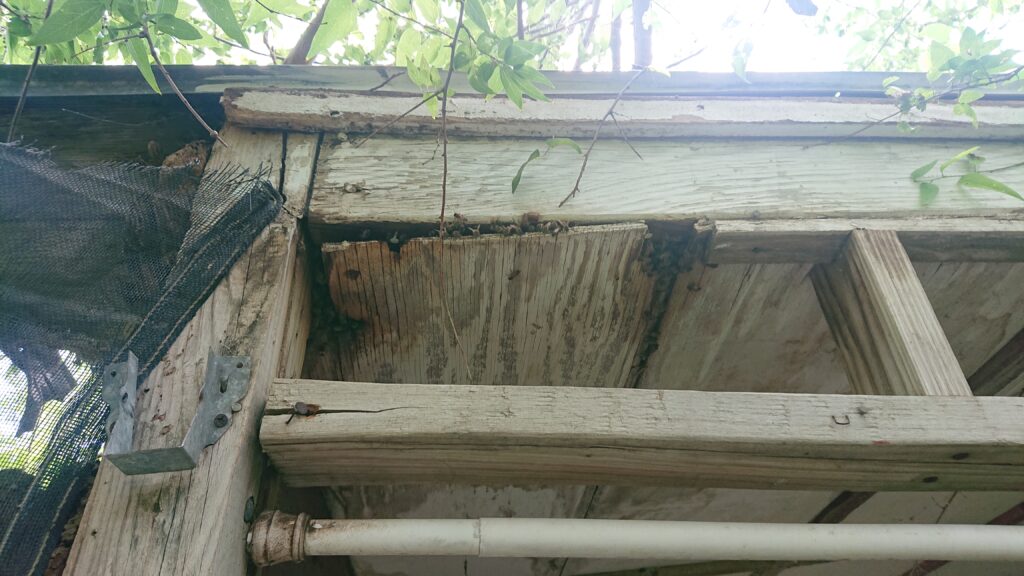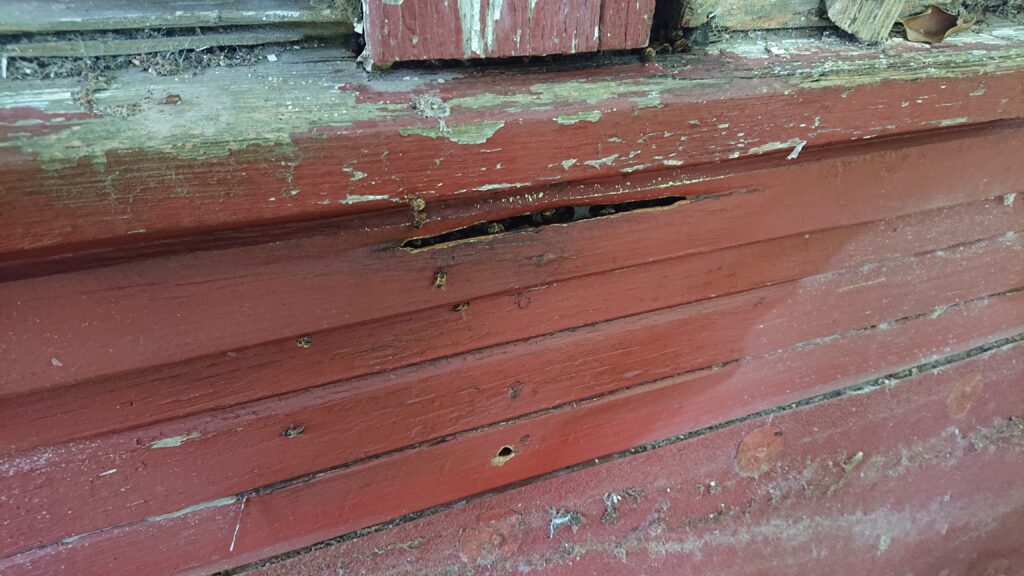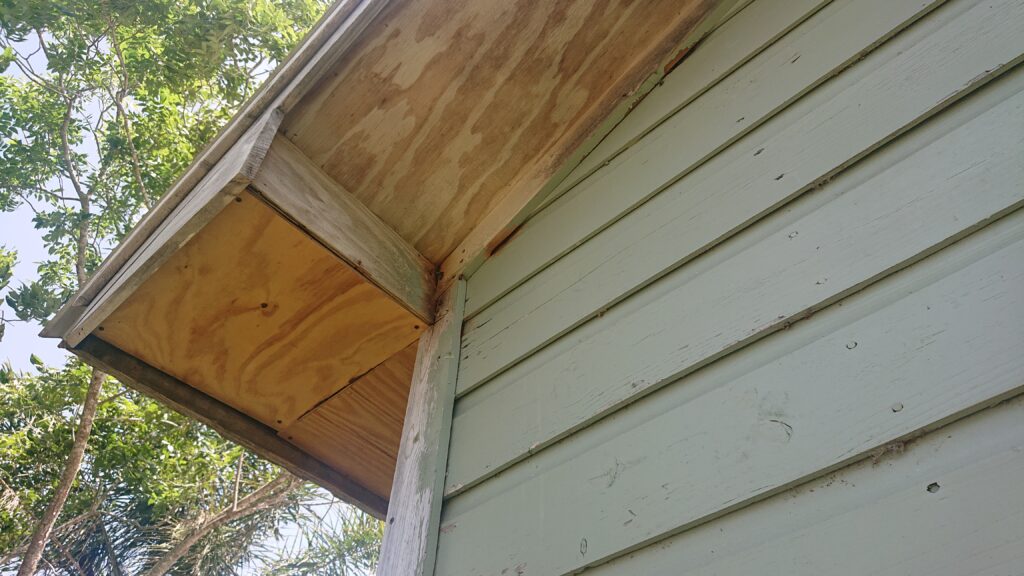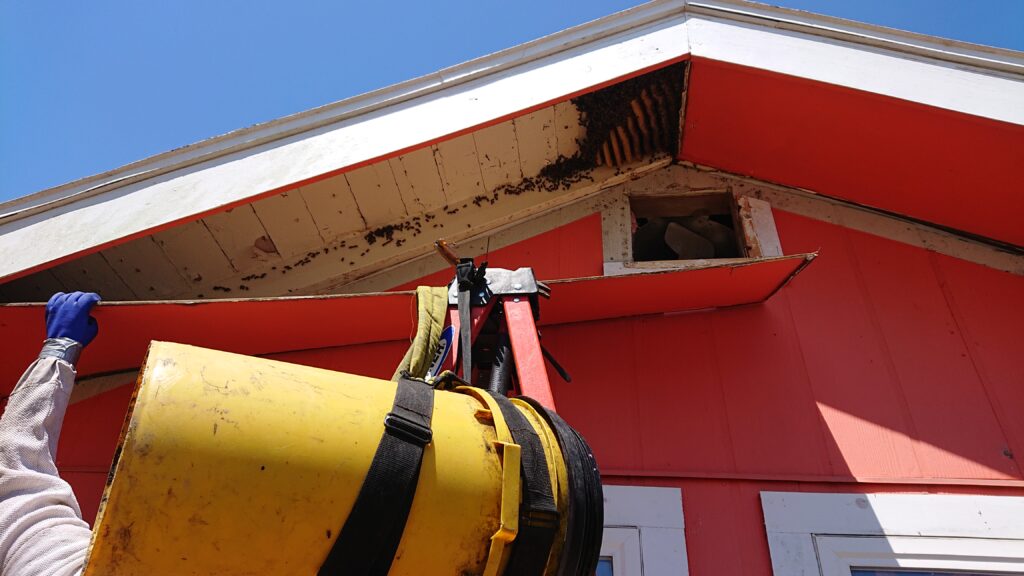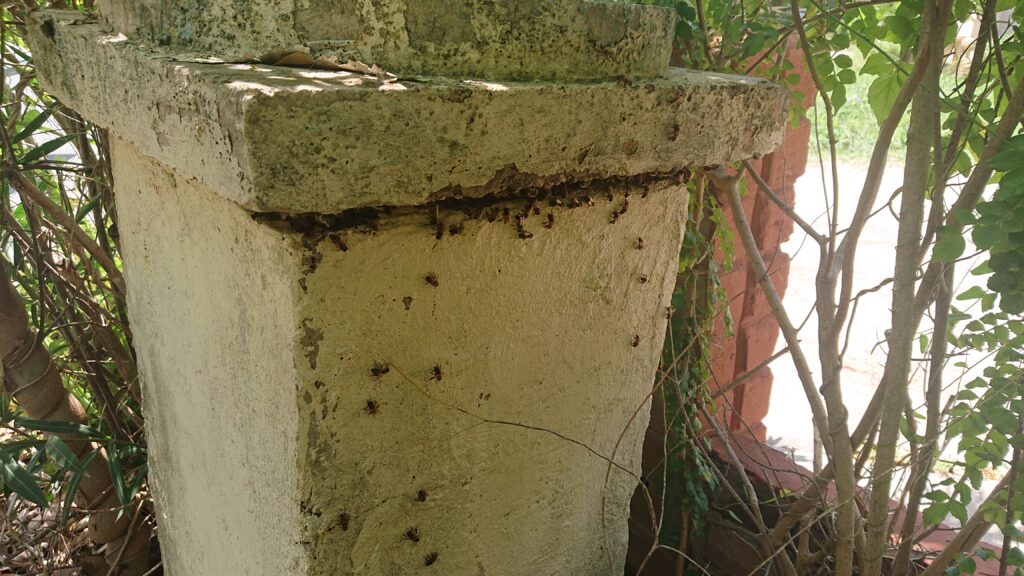Quick Guide to a Bee Free Home!
With the first real cold front of the season blowing on in, it’s time for the bees to start really winding down for the year. While abnormally warm and wet seasons can affect the behavior of bees, generally a colony will spend the winter clustered together keeping themselves and the queen warm. They will eat through some, or all, of their food resources and raise very little brood until spring. Swarming season is just about complete, though Mother Nature often goes again the ideas of man, so it’s not unheard of to find bee swarms between October and February in the Rio Grande Valley and other places across the south.

If you’ve had to hire a beekeeper to remove a colony from your home, you already know how troublesome the whole process is! The best way to remove bees from your home is to simply prevent them from getting there in the first place. Bees are wonderful animals to own, so long as they are in a managed hive box. Preparing for swarm season during the winter can help prevent bees from establishing a colony on your property.
A honeybee only requires a hole 3/16th of an inch (roughly 5 millimeter) wide to fit in. If one bee can fit in, a whole colony can. Think of a pea, or the tip of your pinky; if you walk around the outside of a structure and could fit either item in that hole: seal it immediately.

As discussed in a previous post, all feral bees in the RGV are Africanized Honeybees (AHB) and they slightly different house hunting requirements. While the average European Honeybee prefers a large cavity of around 31 liters (8 gallons) in volume, the Africanized honeybee colony will be happy with as little as 13 liters (3.4 gallons). What does this mean for the average homeowner? Feral bees are MORE than happy to occupy the soffits of your house, inside a wall, under a shed, or even in an overturned pot in your overgrown garden!
When bees create a nest, even after it’s removed, the old smell of comb, honey, and pheromones will remain. In the bee world it is a giant, neon sign saying, “Perfect Home Here!” and a hive will be more likely to move into the same exact spot, or at least close by. Repairing this area is very important. If the bee can’t get into the space, then how good it smells won’t matter.
Large cavities can be filled with spray foam or expanding insulation; however, these can ONLY be used to fill in gaps. Bees are strong animals capable of chewing through spray foam in just a few short hours. We’ve even seen hives dig themselves out after somebody sprayed their hive entrances with spray foam. The only really effective way to seal off gaps is with silicone caulking. The silicone is too chewy for a bee to bite or rip apart. During any construction or renovation project, the best bet is to ensure there are no gaps that need filling in the first place, but a the next best is to completely fill and seal any hole with caulking, wood putty, or even concrete and resin.
For motorhomes, trailer houses, and pier and beam houses, a homeowner needs to take extra care because bees will happily create an open-air nest under your house. Ideally it is best if the house is on a solid foundation, but barring that, creating a net barrier that is too small for a bee to enter will help reduce the risk of getting bees under the home. The net could be made with any strong, relatively tight knit material such as window screening. Unfortunately, because netting is easily damaged, it’s best to inspect this area, and any other area in your property, on a regular basis.

We often find bees under the plastic tarps covering the underside of trailer houses. Bees LOVE them and can remove insulation easily.
The last major area we find bees are under sheds. If the structure is not placed on a concrete pad and sealed, it creates an inviting home for feral bees. Often times metal skirting around the shed will have breathing or weep holes that can easily be blocked from insects by inserting a scrunched up piece of window screening. If a shed does not require weep holes, a beautiful way to ensure insects can’t live under the floor is by putting a raised garden bed around the area. While honeybees can dig, they are generally unwilling to dig out holes while looking for new homes unless they already know it’s there.

This building was made with a concrete barrier and attached walkway but the siding had rotted just enough for bees to find a way under. 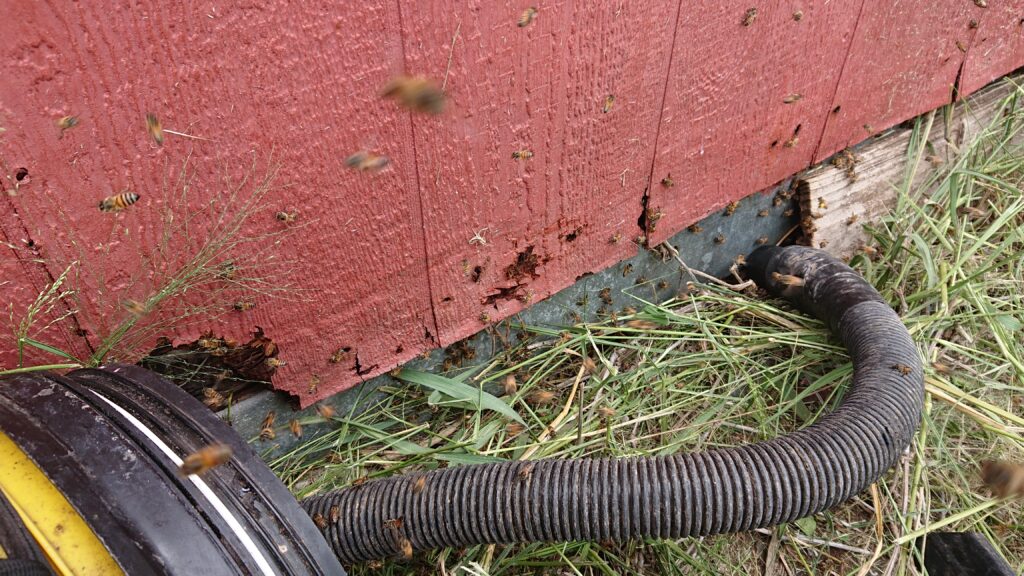
This shed was placed directly on the ground, and the uneven ground and growing grass allowed the bees to nestle inside.
Last but not least! If you own any property you are wishing to develop, or haven’t maintained in a while, it is advisable that you do a detailed inspection of the area. Loud machinery can agitate feral hives and we hear countless stories of clients getting attacked by bees while mowing or cutting down trees because there was a colony in a soffit or shed on the property. Of course safety is the most important part here! You do not want to literally stumble into a nest. While honey bees do not like living on or near the ground, it is not uncommon to find them in a pile of wood, a log, or inside forgotten containers.
As always if you need any help with bees or even bee proofing your property it is always a good idea to get in contact with a local beekeeper for advice!
- Share:
